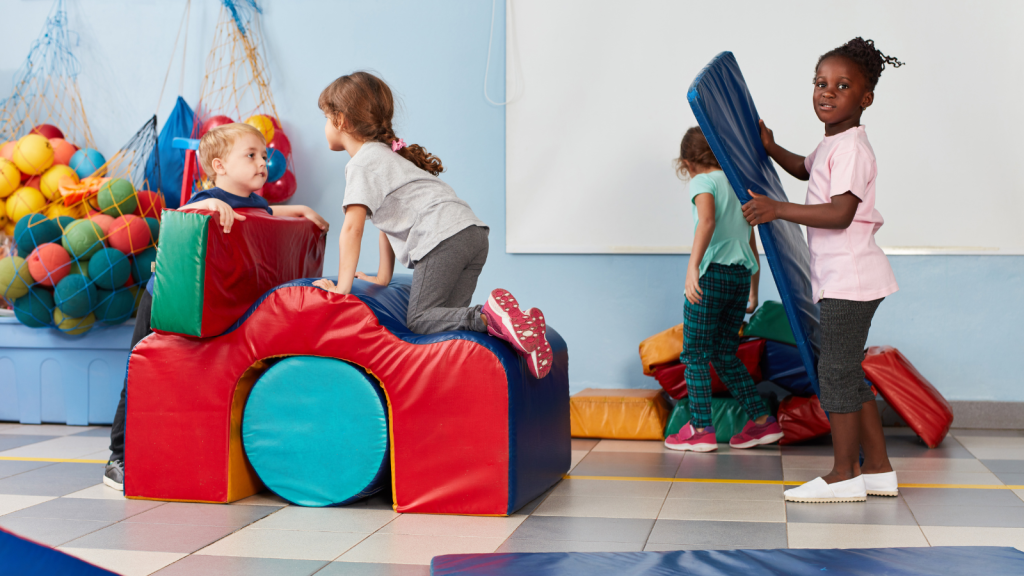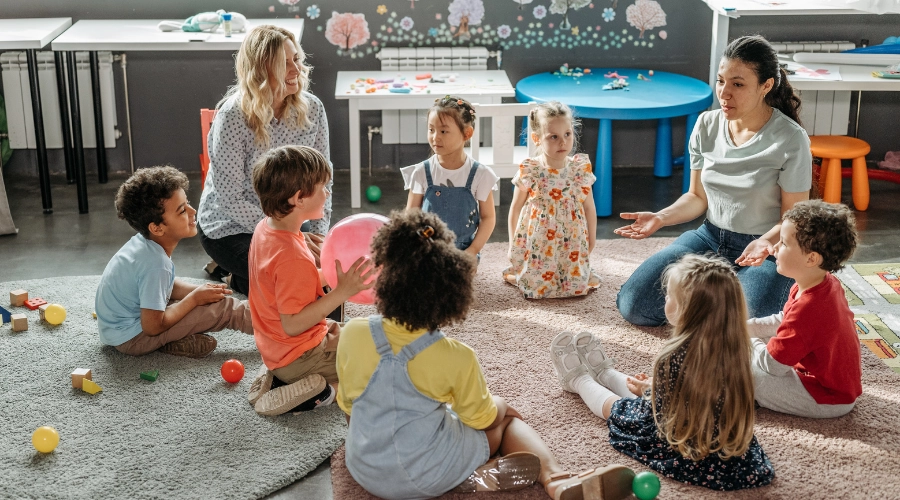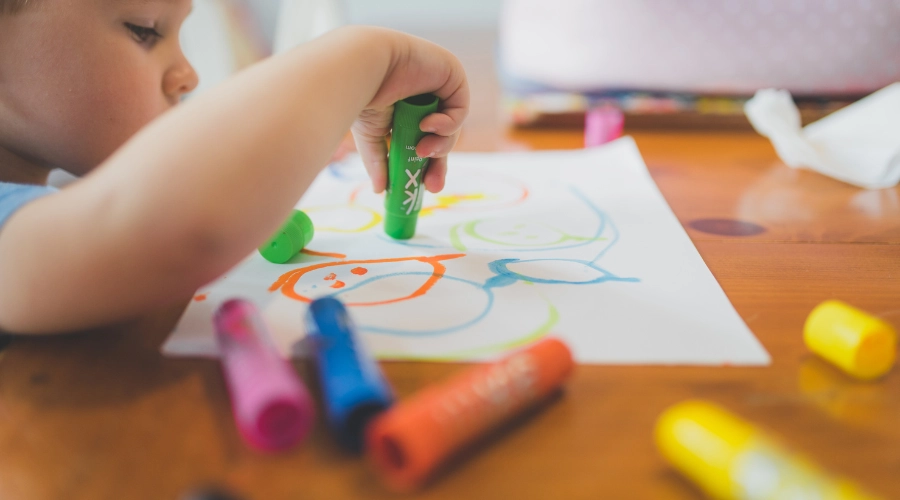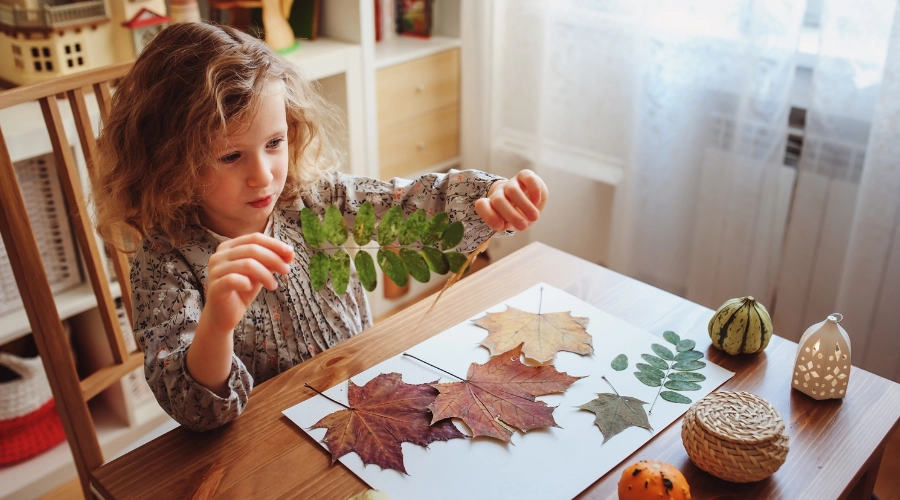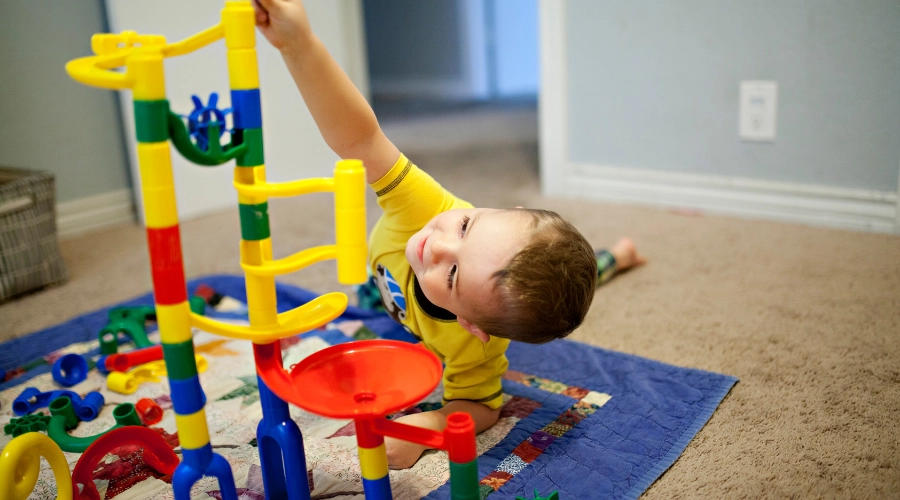An engaging curriculum is critical to helping children grow and develop in the changing world of early childhood education. At our center, learning through play and exploration is practical and essential for creating well-rounded individuals. Our engaging curriculum boosts thinking, social, emotional, and physical development through age-appropriate activities and creative teaching methods.
Join us at Paramus Preschool, where we’re committed to nurturing the minds and characters of children through our high-quality preschool programs. We invite you to reach out at (201) 500-2951 to discover how we can support your child’s development.
Age-Appropriate Activities for Holistic Development
Our curriculum includes activities matching each child’s age and developmental stage, ensuring they are fun and doable. These activities help children grow in all areas: thinking, physical abilities, social skills, and emotions.
Sensory play is very important for infants. They use textured materials and interactive toys to explore their senses and develop early motor skills safely and engagingly.
Toddlers do activities that build fine and gross motor skills, like stacking blocks or climbing soft structures. These activities improve their physical abilities, coordination, and muscle development, boosting their independence and confidence.
As children move on to preschool and beyond, they participate in more complex activities that encourage problem-solving and critical thinking. Preschoolers work on hands-on projects, group activities, and creative tasks that spark curiosity and help them grow intellectually, socially, and emotionally.
By providing age-appropriate activities at each stage, we ensure children get a balanced education that supports their overall well-being and prepares them for future learning.
Incorporation of STEAM Concepts
To prepare children for a future where science and technology are essential, our curriculum includes STEAM (Science, Technology, Engineering, Arts, Math) concepts in a fun and engaging way. These activities are designed to make children curious, creative, and good at thinking critically.
- Science: Young learners explore basic science through simple experiments, like mixing colors or watching plants grow. These activities help children observe, ask questions, and understand the natural world.
- Technology: Technology is introduced through interactive educational apps that make learning fun. These tools help children develop digital skills, interact with multimedia content, and enjoy storytelling, supporting their thinking skills.
- Engineering: Children learn engineering by building structures with different materials. Activities like making towers with blocks or creating simple machines with everyday objects help children understand basic engineering ideas and how to solve problems.
- Arts: Arts and math activities are combined to boost creativity and problem-solving skills. For example, rhythm exercises that link music and math or art projects that use geometric shapes let children express themselves creatively while learning about math.
- Math: Children learn math through hands-on activities that make abstract ideas easy to understand. They explore numbers, patterns, and shapes in fun ways, such as through counting games, puzzles, and hands-on activities.
By incorporating STEAM concepts into our curriculum, we help children learn in a balanced way that prepares them for future success.
Language Development Activities
We recognize that language development is a cornerstone of early learning. For our youngest learners, we introduce sign language to help them communicate their needs and feelings before they can speak. This not only reduces frustration but also enhances cognitive and emotional development. As children age, we introduce Spanish as part of our language development activities. Learning a second language early in life enriches cognitive skills and cultural awareness, setting the foundation for lifelong language acquisition.
Regular Assessments for Personalized Learning
We do regular assessments to ensure that each child is doing well and getting the right challenges. These checks are for tracking progress and adjusting the curriculum to fit each child’s needs. By observing, assessing, and getting feedback, we can change our activities to support each child’s development, keeping them engaged and motivated.
Conclusion
An engaging curriculum is more than just a bunch of activities—it’s a fun way of learning that mixes play and exploration with clear educational goals. By including activities that fit each age, STEAM concepts, language development, and regular assessments, we create a place where children are excited to learn and grow. At our center, we aim to give a caring and stimulating educational experience that encourages kids to embrace school and puts them up for success up for success in the future.

